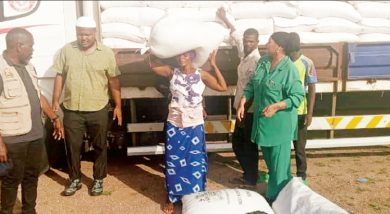Taxpayers set To bleed more
Taxpayers face two options of either forking out more in public enterprises bailouts or letting them go bust under crippling debts as the shareholder freezes most of their working capital by not paying bills.
Out of the 21 parastatals that government’s latest economic report has analysed, nine (43 percent) have debt equity ratios that could shove them into insolvency.
While the ideal debt equity ratio depends on the industry a company operates in and on individual business circumstances, financial analysts generally agree that a debt ratio of more than 75 percent points to a company on its way to bankruptcy.

Perhaps more worrying is the financial position of four of the six major utility companies—five water boards and Electricity Supply Corporation of Malawi (Escom).
As at December 2017, according to government’s 2018 Annual Economic Report, Escom had a debt equity ratio of 298 percent which prompted it to seek a K50 billion bailout package from Treasury. However, the purse keeper banged the door in the power firm’s face.
During the same period, Blantyre Water Board (BWB) was panting under a 106 percent debt equity ratio; Central Region Water Board (CRWB) was suffocating with 177 percent load while Northern Region Water Board (NRWB) was sweating under a 151 percent pile.
The star performers among utilities in terms of strong financial leverage—low debt equity ratios—are Lilongwe Water Board (LWB) at seven percent and Southern Region Water Board (SRWB) at 19 percent.
Among the 21 parastatals, it is Airport Development Limited (ADL) that has the lowest debt exposure at three percent while Malawi Institute of Management (MIM)—with its six straight years of loss-making—is the most over-leveraged statutory body analysed.
Apart from their over-reliance on creditors’ funds for survival, another ailment for parastatals is inefficient spending, especially in areas of procurement where prices tend to be exaggerated and materials are sometimes bought without being needed.
Escom and BWB are among the major culprits of procurement inefficiencies, according to investigative reports by the Office of the Director of Public Procurement (ODPP).
Treasury—which owns the companies on government’s behalf—also believes parastatals spend too much on remuneration which gnaws at their working capital.
But Capital Hill is no wide-eyed innocent player in this mess, having allowed its ministries, departments and agencies (MDAs) to use parastatal services without paying bills promptly.
So far, government institutions owe over K6 billion to utility companies such as water boards. The bills have been outstanding for more than a year.
Noose tightens
This financial position—high debt equity ratios and stuck trade receivables (unpaid bills)—has left statutory bodies with barely enough cash to sustain the enterprises; let alone invest to generate more revenue over time and offer better services.
For example, parastatals only managed to pump in an average of 21 percent of the budgeted capital expenditure for the 2017/18 financial year which expired on June 30 as cash flow problems and suffocating debts strangled them.
Thus, parastatals could only raise 46 percent of the revenue government was expecting and remitted just 36 percent on average of budgeted dividends to Treasury.
The parastatals’ underperformance is now putting pressure on the taxpayer, who in the last fiscal year, had to cough K45 billion to rescue State produce trader Agricultural Development and Marketing Corporation (Admarc) alone when Treasury paid off its loans.
There is no analysis of Admarc’s financial performance in the 2018 Annual Economic Report.
Curse of unpaid bills
Piling unpaid bills—especially in utilities—is part of the drag on parastatal performance.
LWB is, however, in a better financial position having reduced its debt equity ratio from 130 percent in 2013/14 to seven percent as of December 2017.
SRWB is also failing to recover K6.6 billion owed by its customers, of which K800 million is held up by government institutions.
However, its stable working capital turnover of K2.5 billion as at December 31 2017 puts it in a better position of solvency unlike other boards.
For CRWB, the report says: “Debt by public institutions remained a major cause of cash flow challenges faced by the board. Debt currently stands at K2.4 billion, of which public institution debt is K1.9 billion.”
CRWB’s debt equity ratio—at 177 percent—raises sharp questions of financial sustainability.
Trade debtors—and MDAs in particular—have hit NRWB’s financial position hard.
“This has become worse. It is mainly due to delays in payment by trade debtors amounting to K3.2 billion, up from K2.5 billion in 2016/17.
“Of this amount, K1.8 billion is from outstanding water bills by public institutions,” the Treasury annual report partly reads.
It is not just water boards being affected by debts from public institutions.
The financial performance of Malawi Housing Corporation (MHC) is overshadowed by K1.3 billion in arrears from its biggest customer—government.
It is no wonder that as at December 2017, MHC working capital remained negative—meaning the company’s current liabilities exceed current assets—at K634 million, although its debt equity ratio, at seven percent, may secure its long-term fiscal health.
Escom incurred a K6.3 billion loss-after-tax as at December 31 2017 as operating costs jumped sharply amid multiple procurement scandals dogged by inflated prices and buying of materials it neither needs nor—according to its new board chairperson Thom Mpinganjira—use 10 years from now. This has tied up working capital.
The company’s working capital was expected to shrink to K16.4 billion by the close of the 2017/18 financial year on June 30. That is a sharp fall from K21.4 billion in 2016/17 and K34.8 billion in 2015/16; which raises questions of fiscal sustainability.
While admitting that MDAs have contributed to parastatals’ precarious fiscal positions, Secretary to the Treasury Ben Botolo said in a recent interview for this story that the bodies have to a large extent themselves to blame for not having viable business models to wean them of their dependency on government as the biggest customer.
He said: “Their business models are not the best. They have increased costs against own revenues, spending a lot on salaries, but not improving their revenue base knowing they are fully owned by government and it will come in to assist.”
Botolo said Treasury would be strict with parastatals and no longer bail them out anyhow until they find a means to review their expenditure levels.
But economist Gilbert Kachamba stressed the need to balance between parastatals making profits and ensuring that they deliver services in a way that is affordable to the majority.
He said: “The business models might not be right, but there are external factors beyond their control that put them in the position they are in. There is a lot of central government interference in their operations.”
Kachamba cited Admarc, which is making losses partly due to government interference in maize pricing. This forces the State grain trader to sell at a lower price because of the social aspect of the institution.
Which way parastatals?
Two economic commentators have suggested that government should consider entering into public private partnerships (PPPs) to avoid bailing out the State-owned enterprises while ensuring their social functions are not compromised.
Chancellor College-based economist Professor Ben Kaluwa said as long as there is a conflict of objectives in the major parastatals, they would continue to underperform.





